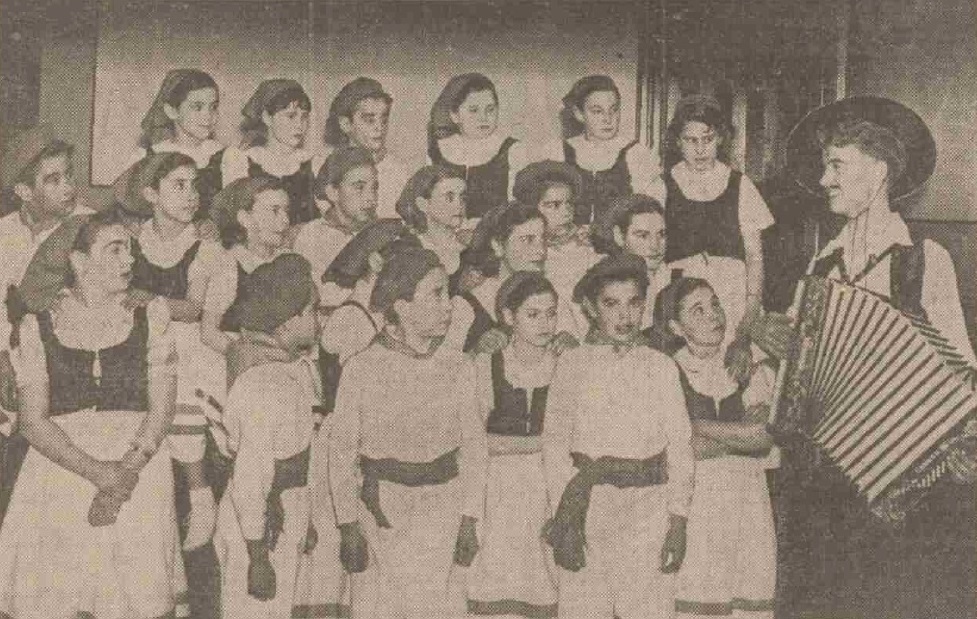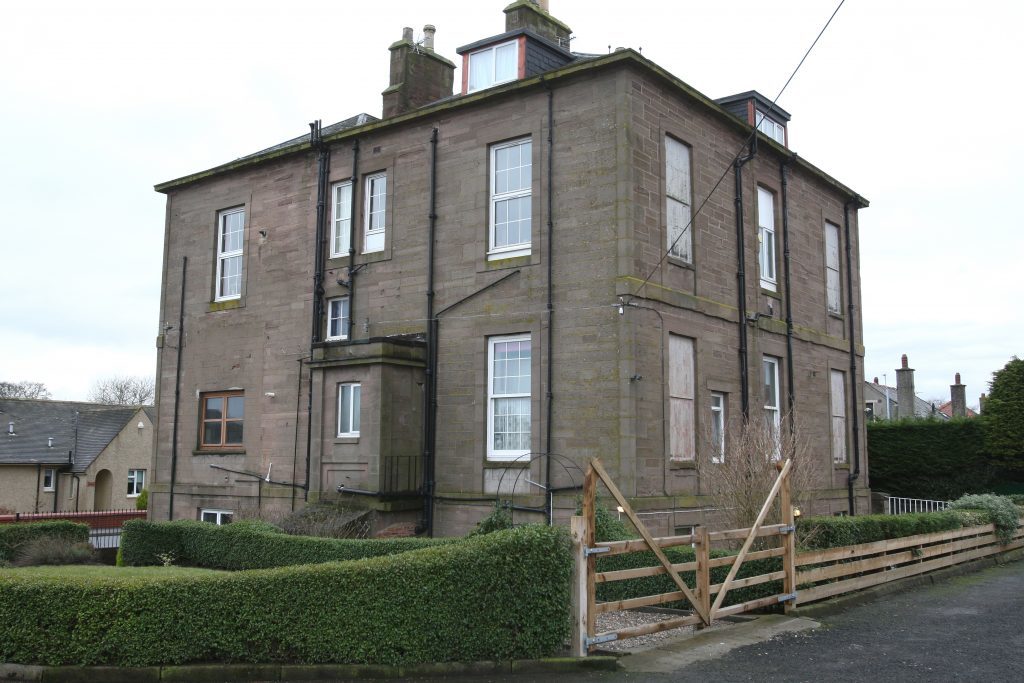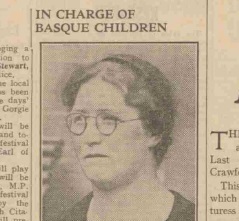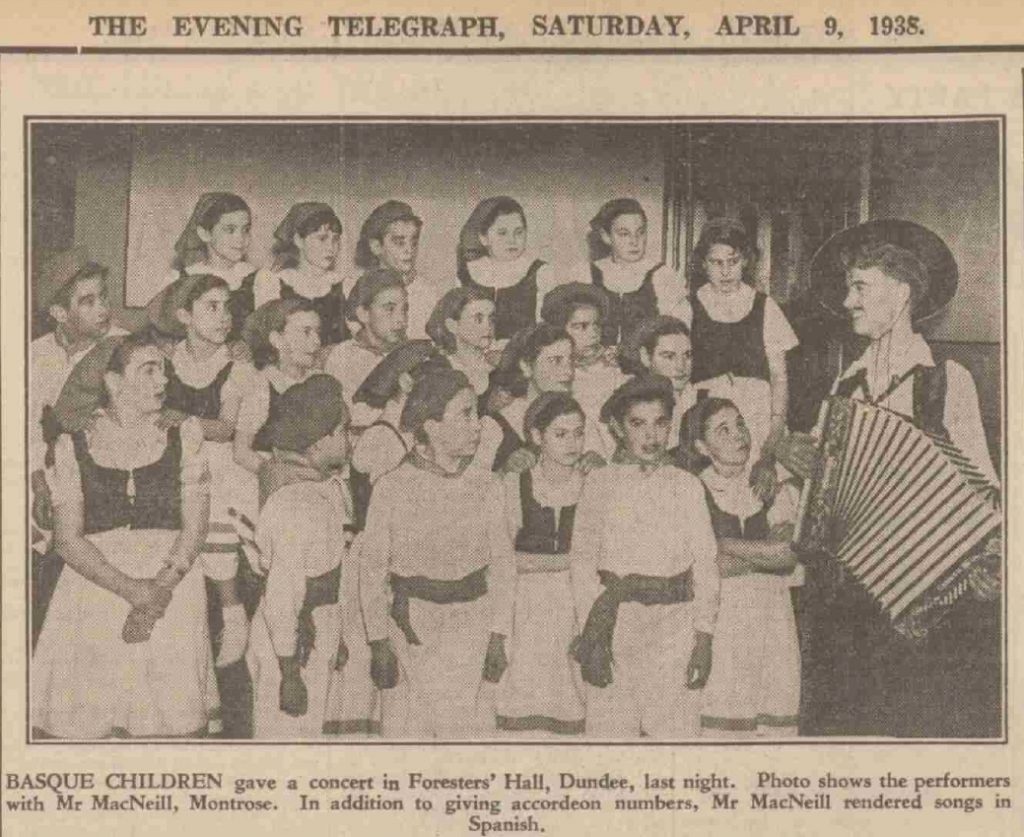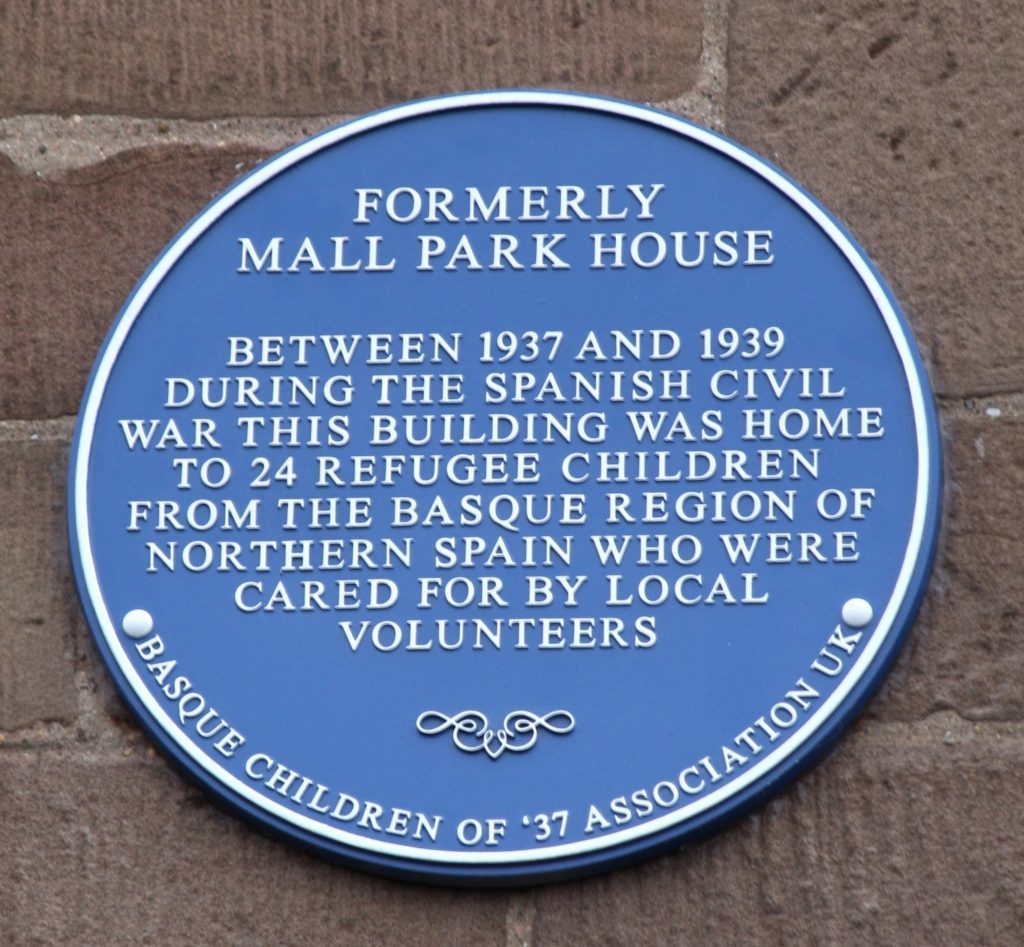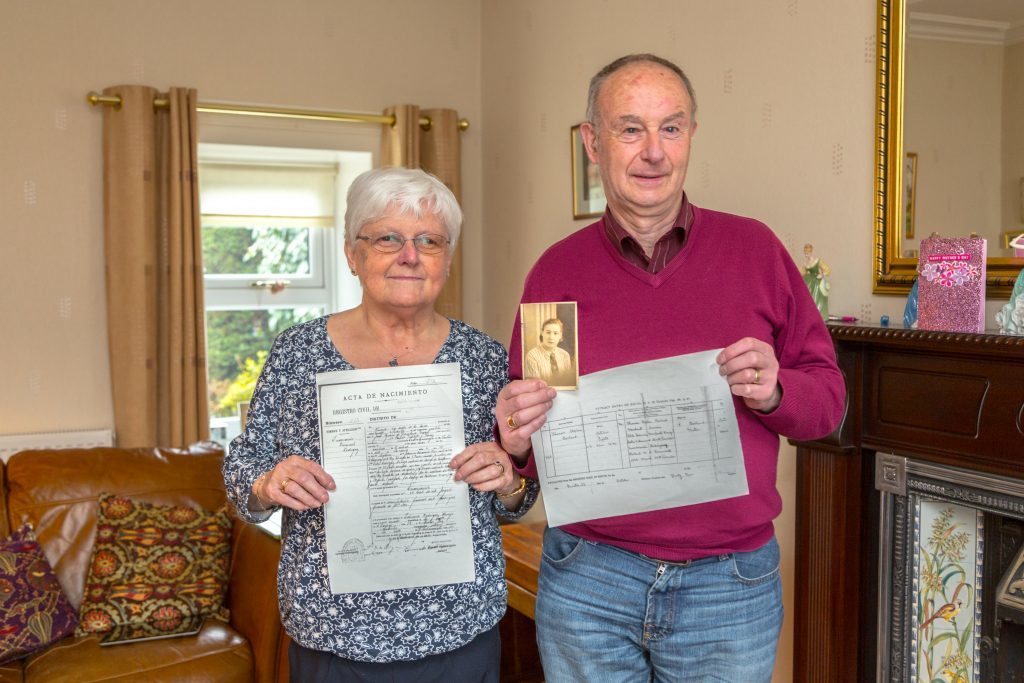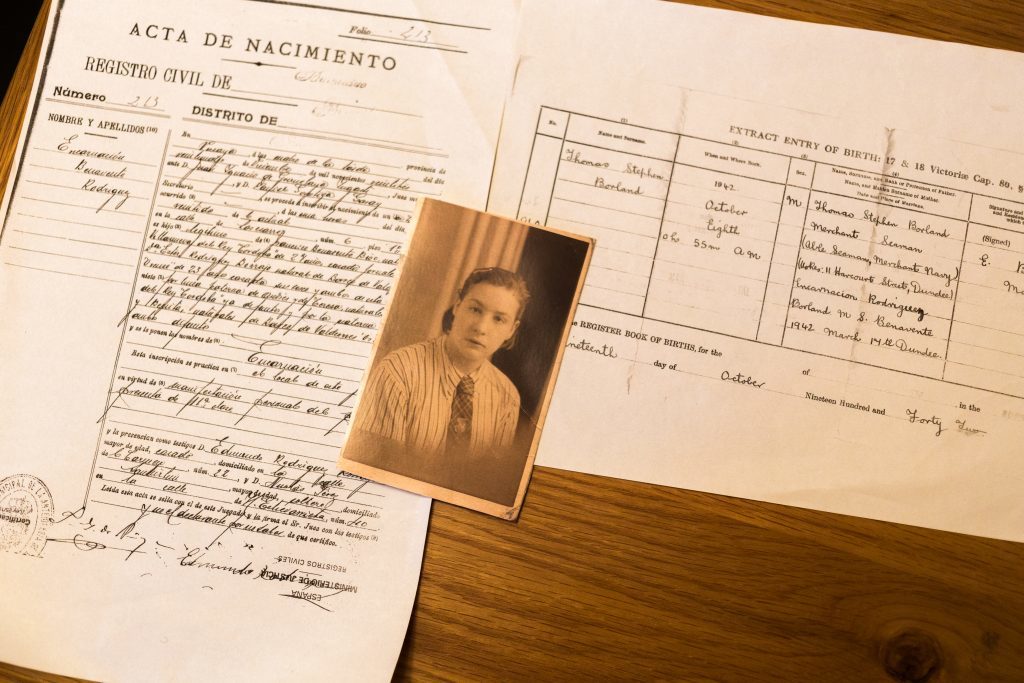Eighty years ago this week a cargo ship filled with thousands of children set sail from Spain to Britain to escape the Spanish Civil War on a journey that would ultimately allow a colony of Spanish children to stay in Angus.
The destruction of the town of Guernica by Nazi planes under the direction of Francisco Franco in April 1937 saw the Basque government appeal to foreign nations to give temporary asylum to children.
Although the British government adhered to its policy of non-intervention, an old steamship designed to carry 800 passengers was loaded with 3,840 children, 80 teachers, 120 helpers, 15 Catholic priests and two doctors and set sail for Southampton Docks.
A temporary camp for the refugees was set up in three fields by volunteers and over the following weeks the children were sent to 90 colonies across Britain which had been organised by churches, trade unions and private individuals.
People in Tayside took up the cause and more than 30 organisations came together to organise the hosting a group of children, including Women’s Liberal Association, TOC-H, Dundee Breakfast Club, Shop Assistants Union, Trades & Labour Council.
A home was sought in Dundee but none could be found so the children came to Mall Park House in Montrose, a former mansion house owned by the Dundee Free Breakfast Mission. It was the only colony to be located in Scotland.
On September 17 1937, 24 children aged between five and 15 arrived at Montrose Station where they were greeted by officials from a number of the charities. A sign stating ‘Viva Espano Salud’ greeted the children.
After weeks of living in tents the youngsters were said to have been so delighted at their new surroundings that they hugged each other and threw their arms around their teacher, kissing her and thanking her for bringing them to Montrose.
Miss May Wilson, who was fluent in the language, was put in charge at Montrose, while Basque teacher Adelina Larraga and helper and cook Maria Blanco came with the children.
The older girls helped with the housework and looking after the younger children, the boys brought in the coal and chopped wood.
Despite being educated separately they were not cut off from the local children and they had regular days when local children came to play.
It cost approximately £20 per week to keep the children and to help with fund raising the children put on a number of concerts across Scotland, often appearing dressed in their Basque costumes to perform Basque and Spanish dances and sing Spanish folk songs.
During one concert at the Caird Hall in Dundee the 30 Basque children entertained an audience of 3,000.
At the end of April 1938 nine children were returned to their parents in Bilbao but they were replaced by others who had either been orphaned or whose parents were themselves refugees.
In all, the Basque children stayed in Montrose for almost three years.
A group of the former children made an emotional return to Montrose in July 1985.
As tokens of their appreciation for their happy stay almost 50 years earlier, the former refugees presented Angus Council with a silver plaque from Bilbao and a silver salver from the Province of Biscay.
An exhibition about the Basque children colony is planned for August 28 to September 9 at Dundee Central Library.
Memories
One of the children who arrived at Montrose from Spain was Encarnacion Buenavente whose son Tom Borland lives in Tayport.
Unfortunately he has little knowledge of his mother’s time in Montrose as she died a month before he turned two.
“My mother was 13 when she arrived with my auntie Esther who was about nine,” he said.
“Before they came to Scotland my auntie Esther told me that they had seen their father shot in the street by a firing squad.
“They lived in Bilbao but everyone panicked after Guernica was bombed and put the children on a ship to Britain.
“At the camp they would have seen newsreels showing that Bilbao was very badly bombed after they left.”
Mr Borland’s mother and auntie wanted to stay in Scotland after their time at Mall Park came to an end as they were orphans.
“My mother would have been about 15 at the time and they got her a job in service in Dundee,” he said.
“She said she would only take the job if her sister could also stay and a foster mother was found for her.
“She was married at 19 and had me when she was 19 but two years later, in 1944, she contracted tuberculosis and died.”
Mr Borland started to try to find out more about the Children of Basque’s stay in Montrose about a dozen years ago and in 2008 unveiled a blue plaque at Mall Park House with the then Angus Provost Ruth Leslie Melville.
“I’ve been to Spain to where my mother is buried and in 2010 I exchanged letters with a woman in Bilbao who was in her 90s and who was one of the Basque children.
“She couldn’t believe I had contacted her as my mother was one of her best friends.
“She came back to Montrose in 1985 and could remember attending a football game at Links Park.”
